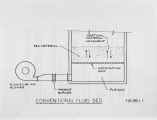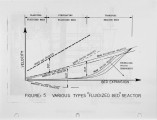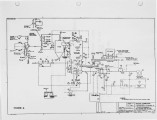| Title |
Advanced Fluid Bed Combustor for Thermal Disposal of Industrial Wastes |
| Creator |
Nutcher, Peter B.; Kolczynski, Joe |
| Publisher |
University of Utah |
| Date |
1990 |
| Spatial Coverage |
presented at San Francisco, California |
| Abstract |
The unique features of spouted fluid bed combustors (SFBC) are discussed and compared with conventional bubbling beds. The advantage that they offer in providing time, temperature and especially turbulence is explained. In one particular design of SFBC, horizontally positioned air nozzles promote vigorous cross bed recirculation of the feed once it enters the fluidized combustion zone. The performance of such a unit is at least equal to circulating fluid beds, and the construction is much simpler and less expensive. Instead of a conventional hearth with vertical tuyeres, this SFBC design has a number of relatively large bore stainless steel pipes stretched across the bottom of the bed to form a grate. Each pipe is supplied with air at both ends from a fluidizing blower and plenum on the outside. Combustion air is distributed under the bed from a series of large holes along the sides of each pipe which creates a symmetrical pattern of large air spouts over the entire area of the bed. This type of SFBC is mechanically strong and does not suffer from the plugging or leakage problems of conventional grid type hearths. Additionally, ash removal is easier, quick startups are practical, and larger turndowns can be obtained. Operation of this SFBC is discussed, both oxidizing and gasifying. Results are presented to show that a wide range of waste materials can be safely incinerated. By using a mobile pilot scale unit, process operating conditions can be optimized. |
| Type |
Text |
| Format |
application/pdf |
| Language |
eng |
| Rights |
This material may be protected by copyright. Permission required for use in any form. For further information please contact the American Flame Research Committee. |
| Conversion Specifications |
Original scanned with Canon EOS-1Ds Mark II, 16.7 megapixel digital camera and saved as 400 ppi uncompressed TIFF, 16 bit depth. |
| Scanning Technician |
Cliodhna Davis |
| ARK |
ark:/87278/s6n300h5 |
| Setname |
uu_afrc |
| ID |
6146 |
| Reference URL |
https://collections.lib.utah.edu/ark:/87278/s6n300h5 |




















